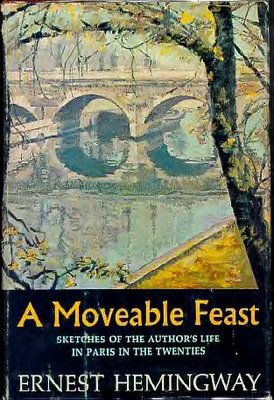

Ernest's passport from late 1921. He was going to Paris with Hadley and the passport was provided by the
Toronto Star newspaper. He was going to be their foreign correspondent in Paris.
Ernest had been a writer for the
Kansas City Star newspaper for seven months in 1917. Learning to write "newspaper style" seemed to be to his liking. He adhered to the
Kansas City Star's style guide which begins: "Use short sentences. Use short first paragraphs. Use vigorous English. Be positive, not negative." This style of writing was also called "cablese" by journalists because of the sparse style that sending telegrams required. Telegrams were expensive and journalists cut down their transmissions to the bare essentials. He carried these lessons over to the
Toronto Star.(Telegrams were called "cables" because they were transmitted on wires - usually running between railroad stations. Almost any town of any importance had a railroad station. If there was a fire in Boston, for example, the story would be sent from there to telegraph receivers up and down the rail line. The story was said to have "moved on the wire." The first reporter to telegraph the story is said to have "broke" the story and "scooped" the competition. Cables could also be sent by radio -"wireless", as the British called radio - anyone who has seen a movie about the Titanic is familiar with radio telegrams. Radios and the necessary large antennas were not very practical or common in the 1920s.)
It was in his newspaper work for the
Toronto Star that Hemingway developed not only his stylistic quirks (his famous terse, staccato style of writing), but also his hard-boiled dialogue, his comedic structure, major themes and sense of plot and character.
When he arrived in Europe he was slow in beginning his work for the
Star. It took him two months to mail in his first articles. That soon became about two a week. He wrote about Swiss tourism,
German inflation, tuna fishing at Vigo, the election of Pope Pius XI, Clemenceau's place in French history, a book review ( his first) of a novel set in Africa; about thirty articles from february untill the end of March, 1922.





















































